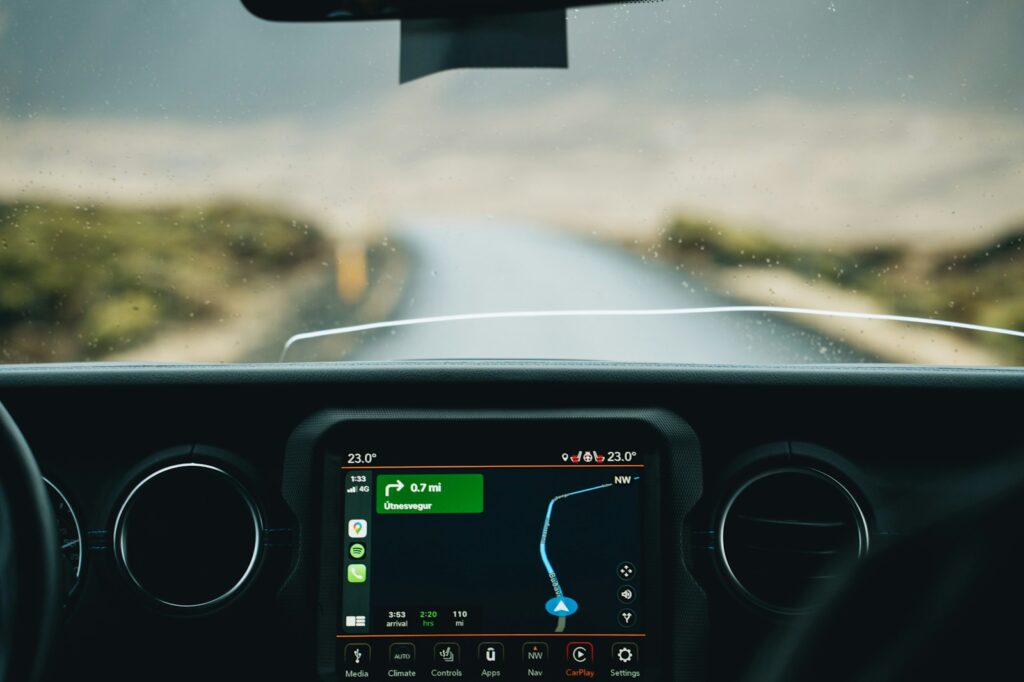
Driving on slippery roads is a constant challenge that drivers face throughout the year. The risk is not limited to winter’s icy conditions but spans across various weather-related hazards such as summer downpours, black ice, and flash floods. Whether navigating Florida highways during a torrential rainstorm, crossing Tennessee bridges with hidden black ice, or dealing with flash floods in Texas, the threat of reduced traction is a year-round concern. Even seasoned drivers can find themselves losing control in a split second, turning an everyday commute into a potentially dangerous situation. This guide provides practical and actionable advice based on decades of automotive expertise, helping you navigate these hazardous conditions with confidence and precision.

The Role of Weather and Road Conditions in Accidents
Weather-related hazards contribute significantly to accidents, injuries, and fatalities each year. Rain, ice, and flooding not only reduce visibility but also severely diminish tire grip and increase stopping distances. According to recent statistics, in Florida alone, 71,101 crashes occurred during rain in 2023, leading to 176 fatalities and more than 13,500 injuries. In total, 106,820 crashes on wet road surfaces resulted in 320 fatalities and over 10,000 injuries. Such figures highlight how critical it is for drivers to be aware of the impact of adverse weather conditions on their driving.
These hazardous conditions require a heightened level of skill and preparation. Knowing how to adjust your driving style, combined with understanding modern car features, can significantly improve your ability to maintain control in slick conditions. The following tips will help you take the first steps toward safer driving on slippery roads.

Keep Your Hands on the Wheel and Eyes on the Road
One of the most fundamental defensive driving techniques in slippery conditions is maintaining a vigilant focus on the road far ahead. On dry pavement, hazards may allow for quicker reactions, but on wet or icy surfaces, increased reaction time is essential. By scanning the road early, you can spot potential dangers such as stalled vehicles, puddles, or patches of black ice. This proactive scanning provides more time to react, whether by easing off the accelerator, gently applying brakes, or steering around obstacles.
For example, in Florida, scanning early allows you to spot flooded intersections that could lead to hydroplaning. In Tennessee, it helps identify icy spots hidden in shaded areas. In Texas, it enables you to spot debris left on the road after storms. By keeping your gaze further down the road, you create time to take smoother, more controlled actions, thus reducing the likelihood of sudden maneuvers that could worsen the situation.

Gentle Steering and Braking
On slippery roads, abrupt steering or braking can easily lead to a loss of control. The key is to perform all steering and braking actions smoothly and gradually. Avoid sharp turns or aggressive braking that can overwhelm the tire’s limited traction, causing a skid. When approaching a turn, ease into it, allowing the vehicle’s weight to shift gradually. Similarly, when braking, apply steady, increasing pressure to the pedal, allowing the anti-lock braking system (ABS) to function effectively without locking the wheels.
This technique is particularly important on rural highways or uneven surfaces, where maintaining traction is more challenging. A sudden tap on the brakes can be enough to lose control on a slick road. The goal is to make gentle, deliberate adjustments, avoiding any shock to the tires, and maintaining a stable trajectory.
Increase Your Following Distance
A simple yet often overlooked safety tip is to increase your following distance on slippery roads. Reduced traction means longer stopping distances. A three-second gap on dry pavement becomes insufficient in wet or icy conditions. Therefore, when driving on slick surfaces, increase your following distance to at least six seconds. In heavy rain, snow, or ice, consider tripling that distance.
This extra space is your first line of defense against rear-end collisions, giving you more time to react and stop if necessary. Whether driving in Florida’s downpours, Tennessee’s frost, or Texas’s flash floods, maintaining a safe distance from the vehicle ahead is critical to avoid accidents.

The Two-Tire Rule for Standing Water
When driving through standing water, especially during heavy rain or floods, the “Two-Tire Rule” can help reduce the risk of hydroplaning. If you can’t avoid a puddle or flooded area, position your vehicle so that only one side—the left or right tires—passes through the water. This approach minimizes the drag and resistance caused by the water, allowing your remaining tires to maintain traction on drier pavement.
For drivers in Florida, Texas, and other areas prone to flash floods, this technique can be crucial for safely navigating unavoidable wet patches without losing control of the vehicle. This simple trick can make all the difference in maintaining stability on slippery roads.

Downshift Instead of Braking on Slopes
When driving on slippery slopes, especially in icy or wet conditions, using your brakes excessively can be dangerous. Instead, downshift to a lower gear to utilize the engine’s natural braking power. This helps slow your vehicle down gently without applying pressure to the brake pedal, which could cause wheel lock-up and a loss of control.
Engine braking helps distribute the braking force evenly, reducing the risk of losing traction. This method is particularly useful on steep or uneven terrain where maintaining control is vital. Mastering downshifting for speed control is essential for any driver navigating hills in poor weather conditions.

Handling Skids
Even the most cautious drivers can find themselves in a skid on slick roads. When this happens, staying calm and following a specific sequence of actions can help you regain control. First, lift your foot off the accelerator. Do not engage the brakes, as this can worsen the skid. Instead, gently steer the vehicle in the direction you want to go. If the rear of your car is sliding to the right, for example, steer right.
Allow the vehicle to regain traction naturally without sudden movements, and once control is restored, continue steering gently. Rehearsing these steps mentally can help you respond quickly and effectively in a real-life skid, improving your chances of a safe recovery.

Reduce Speed in Slippery Conditions
Speed limits are calibrated for optimal driving conditions—dry roads with clear visibility. In wet or icy conditions, however, adhering to posted speed limits can be dangerous. Reducing your speed by just 5-10 mph provides a critical advantage, increasing your reaction time and reducing the distance needed to stop safely. For example, in Florida, this adjustment is especially necessary when rain mixes with road oils, creating a slick surface. In Tennessee and Texas, reducing speed is essential for maintaining traction on frost-covered roads or during flash floods.
According to statistics, 70% of weather-related crashes occur on wet pavement. Slowing down when conditions are compromised is the most effective way to stay in control, particularly when traction is limited.

Avoid Cruise Control in Rain or Ice
While cruise control can be helpful on long, dry stretches, it becomes a liability in slippery conditions. The system can’t respond to the subtle changes in road grip that occur on wet or icy surfaces. If your vehicle encounters a patch of standing water or black ice while cruise control is engaged, it could lead to hydroplaning or loss of traction.
Disengaging cruise control ensures that you remain in full control of the vehicle, able to make immediate adjustments to maintain traction. This is especially important during storms or on icy roads, where immediate, fine-tuned reactions are essential to avoid accidents.

Use Your Lights for Better Visibility
In poor visibility conditions such as rain, snow, or fog, turning on your headlights is not just a legal requirement—it’s a crucial safety measure. Headlights increase your visibility to other drivers and help illuminate the road ahead. In slippery conditions, it’s important to use low beams rather than high beams. High beams can reflect off wet or icy surfaces, causing glare that worsens visibility and can blind oncoming drivers.
Always ensure your lights are on in adverse conditions, even during light rain or fog, to ensure you can see the road clearly and are visible to others. This simple habit greatly improves road safety in challenging weather conditions.
Avoid Sudden Lane Changes
Sudden lane changes can be hazardous on slick roads, as they can quickly lead to a loss of control. On slippery surfaces, any sharp steering can exceed the tire’s grip threshold, causing a skid or hydroplane. Instead, plan your lane changes in advance, signaling early and making gradual, smooth adjustments to the steering wheel. This method helps maintain traction and ensures that your tires stay in contact with the road.
On multi-lane highways, particularly during or after rain, sudden lane changes can result in a dangerous loss of control. Smooth, deliberate movements reduce the risk of veering off course and entering a slide.

Maintain Proper Tire Condition
Your tires are the only point of contact between your vehicle and the road, making them the most crucial safety feature. Proper tire maintenance is essential for driving in slippery conditions. Check your tires regularly for sufficient tread depth and proper inflation. Tires with adequate tread help channel water away, preventing hydroplaning. The National Highway Traffic Safety Administration recommends a minimum tread depth of 4/32 inches for optimal performance.
Additionally, keep your tires properly inflated to ensure maximum contact with the road. Underinflated tires reduce grip, while overinflated tires can make the contact patch too small. Regular tire checks and investing in tires suited for specific weather conditions can improve your vehicle’s performance on slippery roads.

Be Prepared for Emergencies
Even with the best precautions, accidents can still happen. Having a well-stocked emergency kit in your vehicle is essential for managing the aftermath of an accident. Include items like a flashlight, blanket, booster cables, and flares. A first-aid kit, tire inflator, and tools for changing a flat are also valuable additions. Always have a charged phone with a car charger and contact information for roadside assistance.
If an accident occurs, ensure safety by calling emergency services immediately and providing accurate details. Move your vehicle out of traffic if possible, activate your hazard lights, and check for injuries. Document the scene with photos and exchange contact information with other parties involved.

Navigating slippery roads requires more than caution; it demands preparedness, heightened awareness, and strategic driving adjustments. By mastering these essential techniques and maintaining your vehicle in optimal condition, you can confidently face the challenges posed by wet, icy, and flooded roads. With the right mindset and skills, you can transform from a reactive driver to a proactive one, ensuring a safer journey in all weather conditions.





